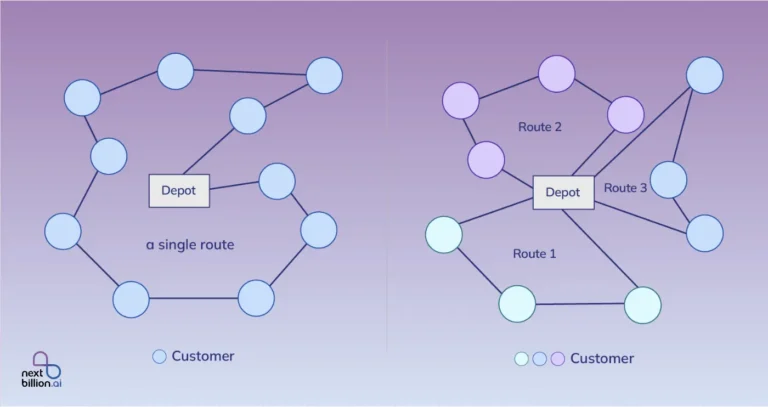
Table of Contents
Google Maps API is a collection of web services that allow businesses to integrate Google’s mapping tools into their applications. These are location-based APIs, which include features like geocoding, location search, real-time traffic updates, maps, distance calculation, and routing integration into the websites. For users, Google Maps API is a way to improve user experience; however, the big question remains. How much does Google Maps API cost? Is it worth the investment? Here’s everything you must know about Google Maps API Pricing.
As you plan to use Google Maps API, account for your business structure and the overall costs, as it can considerably impact your bottom line.

Why Some Companies Go For the Google Maps API
Google Maps API is known as one of the most reliable API providers in the market. Despite the pricing, many companies still choose Google Maps API for the sole reason: reliability. With its regular updates, global coverage, and seamless integrations with other Google services, Google Maps offers an ecosystem that’s tough to beat.
Consider running a logistics company where delays due to length routes or inaccurate directions could result in frustrated users. With Google Maps API, such concerns are fewer. Global coverage means businesses can scale their operations without looking for another mapping solution. However, the API cost is an essential factor that companies can’t afford to ignore.
Also, Google Maps categorizes its APIs into different groups:
- Maps: It covers Dynamic Maps, Dynamic Street View, Map Tiles, Aerial View, Static Maps, Static Street View APIs.
- Routes: It covers Roads, Compute Routes, Compute Routes Matrix, and Route Optimization services.
- Places: it comprises Address Validation, Autocomplete, Geocoding, Geolocation, Nearby Search, Place Details, Place Photos, Text Search, and Time Zone APIs.
Updates on Google Maps API Pricing
Google Maps API has incorporated a pay-as-you-go model, which you can call a usage-based model. You pay only for what you use. The more requests you send, the higher the usage cost. At first glance, the usage-based model seems flexible, but often, the monthly bills come as a surprise to businesses. The costs tend to increase quickly, particularly for high-traffic services or applications.
Free Usage Limits and Credits
Customers can ease their financial burden for API usage with Google’s $200 free credit every month. This generous plan is for startups but not for companies with frequent API requests or a large customer base. After the companies hit this free limit, prices are charged at different rates based on the type of API services used.
Here’s a breakdown of some Google map services:
- Dynamic Maps: $7 per 1,000 requests
- Dynamic Street View: $14 per 1,000 requests
- Static Maps: $2 per 1,000 requests
- Static Street View: $7 per 1,000 requests
To put this in a simple perspective, a busy app such as a ride-sharing service might easily receive thousands of requests daily, resulting in high monthly costs.
What Changed After Google’s Pricing Update
In July 2018, Google announced a pricing overhaul for its Maps services, consolidating its rising costs and pricing structure for high-usage customers. The new model, called pay-as-you-go, gave companies more control over their usage. Users got a free $200 monthly credit, and the cost per request was set at $0.50 USD for every 1,000 additional requests, up to 100,000 daily.
Earlier, most smaller organizations could use Google Maps API for free or at a low cost. However, after the update, customers saw their few hundred dollar bills suddenly rise to thousands. This update caused many startups and small companies to reevaluate using Google Maps and look for other cost-saving alternatives.
Here are some key details about the 2018 pricing model:
- Users get a free $200 monthly credit for API calls.
- When the monthly credit gets exhausted, the customer account is automatically charged.
- Users who exceed an API’s limits will receive an error message, and their Google Maps API platform access might be blocked.
- Businesses could manage their Google Maps API usage fees by setting QPD limits.
- Users must have a Google Cloud Platform billing account and a valid API key to access the core product.
The Cost of Using Google Maps APIs
As per Google’s official pricing page, the cost of Google Maps varies depending on the API type. Let’s look into the Google Maps API pricing breakdown:
Maps:
Dynamic Maps API: Pricing starts at $7 per 1000 requests map loads
Static Maps API: Pricing starts at $2 per 1000 for requests
Places: Prices vary from $17 to $32 per 1000 requests, based on features such as geolocation, geocoding, text search, or autocomplete
Routes: Prices depend upon the APs called. For example, the Advanced Compute Routes cost $10 per 1000 requests, while Basic Compute Routes cost $5 per 1000.
Environment: API pricing starts from $5 per 1000 requests.
These prices are for companies that hit the monthly $200 free credit limit. Larger companies’ costs can balloon substantially as they depend on real-time map APIs for the services offered.
Understand the cost structure to optimize API usage without overspending.
Manage Google Maps API Costs
Here are some simple tips to manage Google Maps API costs:
- Monitor API usage: Google’s pricing model is pay-as-you-go, meaning the more you use, the more you pay. So, customers need to keep track of their API usage and avoid big bill shockers at the end of the month.
- Analyze patterns to understand peak usage times or avoid unnecessary API calls.
- Set limits: Google allows users to set QPD limits in the Google Cloud Platform console so that the cost of use remains controlled. For example, you can use the Google Maps API quota to control the calls you make in a day.
- Optimize requests: Reduce redundant or unnecessary calls by caching frequent data, such as most called routes or user locations. Whenever possible, combine multiple API requests into one. Ensure that you use the most effective API for your business needs.
- Use Google Maps alternative: When global reach or high precision isn’t required, use the other APIs available.
- Prevent unauthorized API usage by restricting API keys to specific IP addresses or referrers.
NextBillion.ai Maps Platform Versus Google Maps Platform
While it’s no surprise that Google Maps API has long been an industry benchmark for location-based services, its pricing model can become expensive for businesses with high API usage. That’s where the NextBillion Maps Platform comes into play—an advanced, flexible, and cost-effective maps alternative that meets the geospatial demand of businesses of all sizes. NextBillion offers flexible plans compared to Google Maps API pricing tiers, which is ideal for businesses with high API usage.
Let’s see how the NextBillion maps platform stands out:
Pricing: Affordable, Transparent, Predictable
NextBillion Maps Platform offers transparent pricing plans with no hidden costs, offering predictable service costs as your business scales. Google Maps API costs vary based on usage for geocoding, geolocation, dynamic maps, routes, and places. NextBillion allows businesses to avoid these escalating API costs with customized pricing plans tailored to their needs.
Customized Solutions
One of NextBillion.ai’s main unique selling points is its customization capabilities. Whether you’re in ride-hailing, e-commerce, or logistics, NextBillion offers industry-specific API solutions that can be integrated seamlessly into your apps. For example, an e-commerce company can reduce its API call frequency through custom data layers and smart caching.
Personalized Customer Support
Hands-on customer support is precious for businesses that need to deploy complex geospatial solutions or fix technical problems. While Google Maps mainly offers self-service help resources, NextBillion’s support team works closely with customers to provide the help they need.
Outstanding Performance
NextBillion.ai Maps Platform competes with Google Maps Platform in terms of scalability, accuracy, and reliability. It offers precise geocoding, real-time traffic updates, and flexible routing features that are important for businesses like ride-sharing and logistics.
Your Best Alternative to Google Maps APIs
When businesses evaluate their mapping alternatives, NextBillion Maps consistently shines as the best option for the Google Maps platform. It creates a cost-effective solution and surpasses personalized support and customizable solutions for mapping services, such as real-time data, routing, and geospatial. Companies look for more control over their maps APIs, and it’s what NextBillion is committed to delivering.
Main Differences Between NextBillion.ai and Google Maps
With its integration capabilities and scalable pricing, the NextBillion Maps platform has proven to be the best alternative to Google Maps APIs. Let’s explore the critical difference between the two platforms:
Feature | NextBillion.ai Maps Platform | Google Maps Platform |
Pricing | Transparent, scalable, and flexible | Tiered pricing, expensive at scale |
Customization | Extensive customization of maps and services for different industries | Limited customization options |
Support | Personalized customer support | Mainly self-service resources |
API Performance | Reliable and optimized for heavy usage | Reliable but expensive when API calls increase |
Free Usage | Customizable free usage that varies based on business requirements and volume | Free $200 in Google Maps API credits |
Cost Management Tools | Usage-based pricing plans | Essential budgeting tools, but it is difficult to forecast exact API costs |
Google Maps platform offers extensive API features, the usage price for which can quickly increase, especially for companies with high usage needs. Moving from Google Maps API to the NextBillion Maps platform is more than saving money. It’s also about getting a more scalable, reliable, and flexible solution that meets your business’s industry-specific demands. Take control of your API costs today. Explore the many possibilities with NextBillion.ai and start growing your business with an efficient, tailored geospatial solution.
About Author
Shivangi Singh
Shivangi is a seasoned Technical Writer with a passion for simplifying technical concepts. With over 5 years of experience, she specializes in crafting clear and concise documentation for various technical products and platforms.







